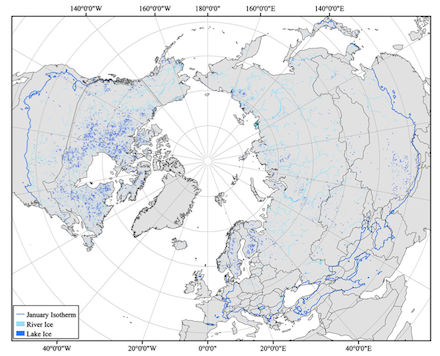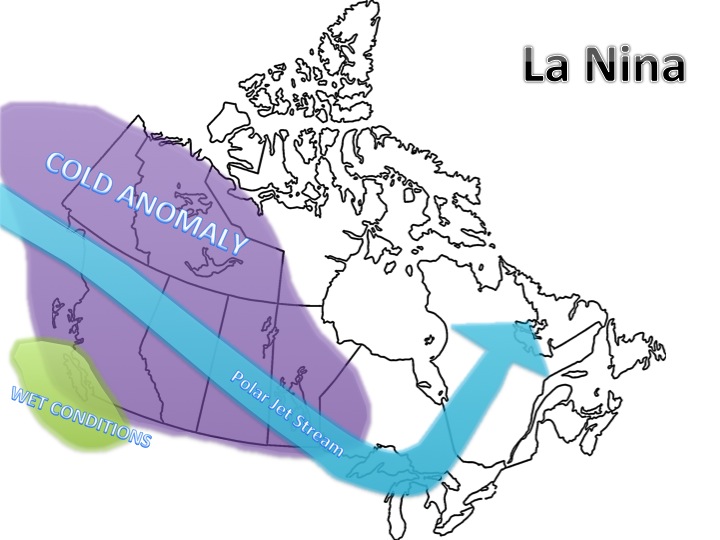
and lakes (dark blue) in the circumpolar Arctic (Brooks et al.,
2013). Click figure for larger image.
The distribution of river systems affected by perennial or seasonal river ice is a function of the migrating 0° isotherm – the altitude of freezing temperature. The processes of river ice formation, growth and break-up are directly correlated to the movement of seasonal cold weather. River ice formation begins when the river system experiences freezing temperatures near the end of the year. As cool temperatures persist, ice growth continues. Once the 0° isotherm migrates away, and temperatures are above freezing, break-up of river ice ensues. Climatological data along with geographic information system (GIS) techniques are utilized to predict which rivers are influenced by river ice in the northern hemisphere. Brooks et al. quantified the distribution of freshwater (river and lake) ice across the northern hemisphere. Figure 1 displays the predicted locations of peak freshwater ice in lake and river systems in the circumpolar Arctic. Using hydrological models, Brooks et al. estimated the total area of rivers to be 120,000km2, with peak ice volume reaching volumes of approximately 140km3 (Bennett & Prowse, 2010; Brooks et al., 2013).


(b) La Nina events (Maren Pauly, information from
Smithsonian Institution). Click figure for larger image.
The temporal fluctuation in river ice regimes have been linked to large-scale circulation events. These events include El Niño, La Niña, North Atlantic Oscillation (NAO), Pacific Decadal Oscillation (PDO) and the Pacific North American (PDA). The influences of these circulation patterns on river ice systems differ across the circumpolar Arctic. During an El Niño event (Figure 2a), oceanic temperatures are warmer than average with consequentially warmer temperatures in western Canadian Arctic and Alaska. As a result, break-up events occur considerably sooner in the western North American Arctic river systems. In contrast, some regions in Russia experience later break-up dates. Additionally, earlier break-up events and later freeze-up events over Canadian rivers correlate with positive phases of the Pacific Decadal and Pacific North American oscillations. In contrast, when Pacific Ocean temperatures are below average, during La Niña events (Figure 2b), river ice duration increases in Canada (Prowse, Bonsal, Duguay, & Lacroix, 2007).
Material on this page was edited and provided by Maren Pauly, Department of Geography, University of Waterloo.
